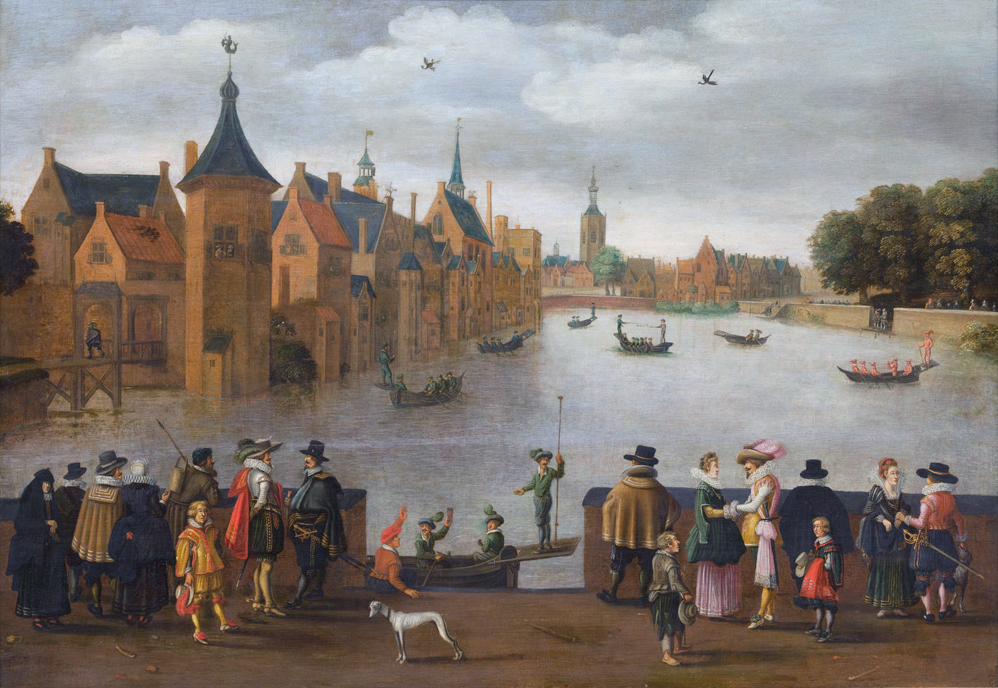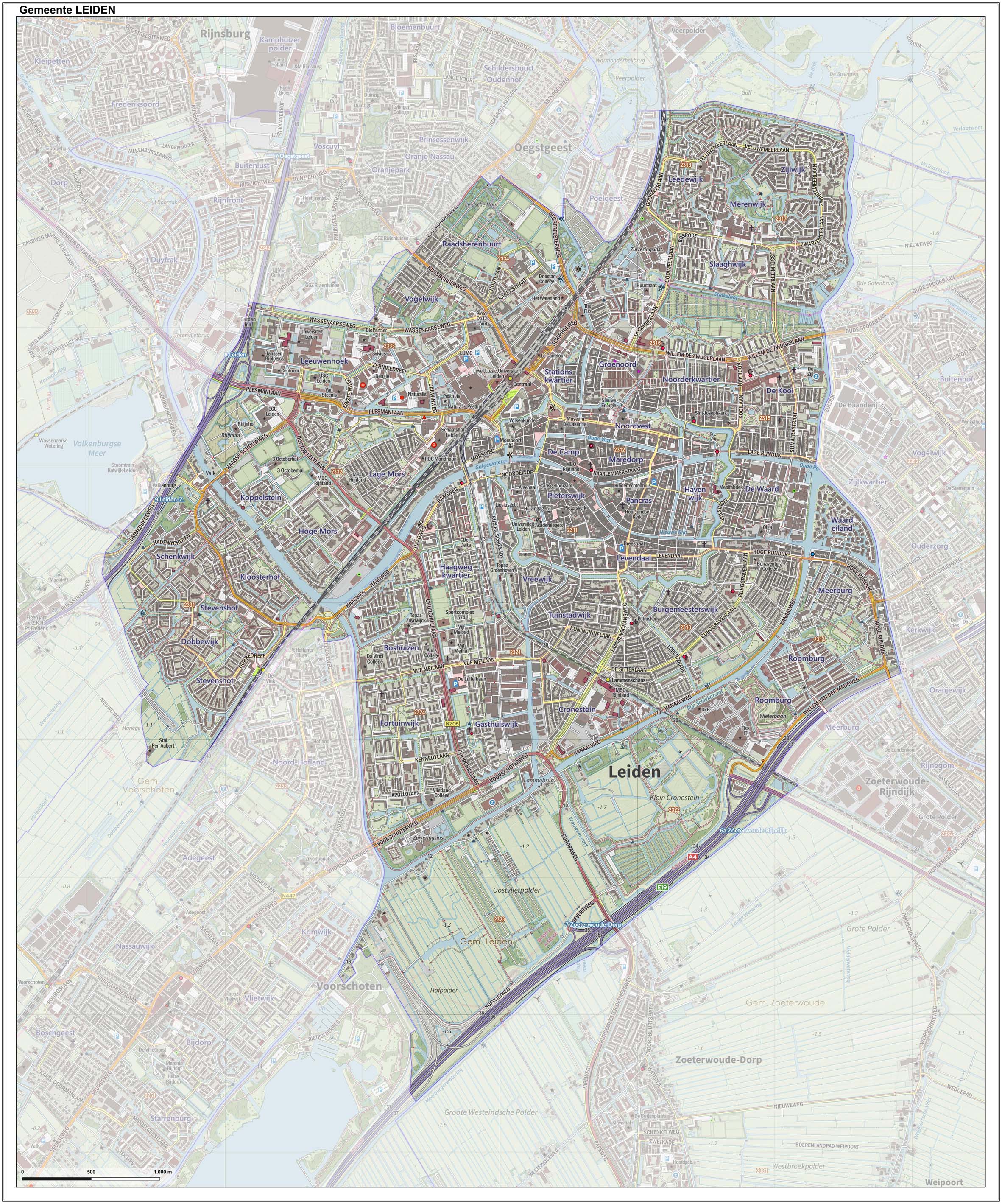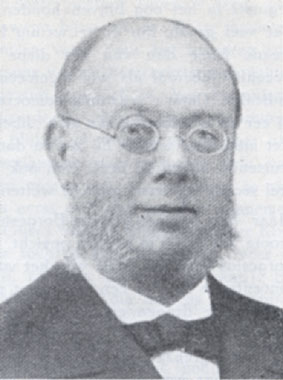|
J.A.G. Van Der Steur
Johan Adrianus Gerard (J.A.G.) van der Steur (30 October 1865 – 7 February 1945) was a Dutch architect and professor at the Delft Technical University, of which he was rector magnificus in the year 1922–1923. Life and work Van der Steur was born in Haarlem where his father, Ad van der Steur, worked as an architect. Between 1983 and 1988 he studied architectural engineering at the Polytechnic School of Delft, where he was also taught by Eugen Gugel. After graduating he travelled Europe and, after returning to Haarlem, he started working at his father's office. From 1907 to 1913 he was the architect in charge of reviewing and realising Louis M. Cordonnier's design for the Peace Palace in The Hague. Van der Steur also designed the Municipal Theatre of Haarlem, a building for the Faculty of Architecture in Delft, Pander & Son's factories in The Hague and a building for De Nederlandsche Bank in Leiden. In 1914 he was hired by the Delft Technical University as a substitute p ... [...More Info...] [...Related Items...] OR: [Wikipedia] [Google] [Baidu] |
Haarlem
Haarlem (; predecessor of ''Harlem'' in English) is a city and municipality in the Netherlands. It is the capital of the province of North Holland. Haarlem is situated at the northern edge of the Randstad, one of the most populated metropolitan areas in Europe; it is also part of the Amsterdam metropolitan area, being located about 15 km to the west of the core city of Amsterdam. Haarlem had a population of in . Haarlem was granted city status or '' stadsrechten'' in 1245, although the first city walls were not built until 1270. The modern city encompasses the former municipality of Schoten as well as parts that previously belonged to Bloemendaal and Heemstede. Apart from the city, the municipality of Haarlem also includes the western part of the village of Spaarndam. Newer sections of Spaarndam lie within the neighbouring municipality of Haarlemmermeer. Geography Haarlem is located on the river Spaarne, giving it its nickname 'Spaarnestad' (Spaarne city). It is ... [...More Info...] [...Related Items...] OR: [Wikipedia] [Google] [Baidu] |
The Hague
The Hague ( ; nl, Den Haag or ) is a list of cities in the Netherlands by province, city and municipalities of the Netherlands, municipality of the Netherlands, situated on the west coast facing the North Sea. The Hague is the country's administrative centre and its seat of government, and while the official capital of the Netherlands is Amsterdam, The Hague has been described as the country's de facto capital. The Hague is also the capital of the provinces of the Netherlands, province of South Holland, and the city hosts both the International Court of Justice and the International Criminal Court. With a population of over half a million, it is the third-largest city in the Netherlands, after Amsterdam and Rotterdam. The Hague is the core municipality of the COROP, Greater The Hague urban area, which comprises the city itself and its suburban municipalities, containing over 800,000 people, making it the third-largest urban area in the Netherlands, again after the urban are ... [...More Info...] [...Related Items...] OR: [Wikipedia] [Google] [Baidu] |
Academic Staff Of The Royal Academy Of Art, The Hague
An academy ( Attic Greek: Ἀκαδήμεια; Koine Greek Ἀκαδημία) is an institution of secondary or tertiary higher learning (and generally also research or honorary membership). The name traces back to Plato's school of philosophy, founded approximately 385 BC at Akademia, a sanctuary of Athena, the goddess of wisdom and skill, north of Athens, Greece. Etymology The word comes from the ''Academy'' in ancient Greece, which derives from the Athenian hero, ''Akademos''. Outside the city walls of Athens, the gymnasium was made famous by Plato as a center of learning. The sacred space, dedicated to the goddess of wisdom, Athena, had formerly been an olive grove, hence the expression "the groves of Academe". In these gardens, the philosopher Plato conversed with followers. Plato developed his sessions into a method of teaching philosophy and in 387 BC, established what is known today as the Old Academy. By extension, ''academia'' has come to mean the accumulation, de ... [...More Info...] [...Related Items...] OR: [Wikipedia] [Google] [Baidu] |
Delft University Of Technology Alumni
Delft () is a city and municipality in the province of South Holland, Netherlands. It is located between Rotterdam, to the southeast, and The Hague, to the northwest. Together with them, it is part of both the Rotterdam–The Hague metropolitan area and the Randstad. Delft is a popular tourist destination in the Netherlands, famous for its historical connections with the reigning House of Orange-Nassau, for its blue pottery, for being home to the painter Jan Vermeer, and for hosting Delft University of Technology (TU Delft). Historically, Delft played a highly influential role in the Dutch Golden Age. In terms of science and technology, thanks to the pioneering contributions of Antonie van Leeuwenhoek and Martinus Beijerinck, Delft can be considered to be the birthplace of microbiology. History Early history The city of Delft came into being beside a canal, the 'Delf', which comes from the word ''delven'', meaning to delve or dig, and this led to the name Delft. At the ... [...More Info...] [...Related Items...] OR: [Wikipedia] [Google] [Baidu] |
Academic Staff Of The Delft University Of Technology
An academy ( Attic Greek: Ἀκαδήμεια; Koine Greek Ἀκαδημία) is an institution of secondary or tertiary higher learning (and generally also research or honorary membership). The name traces back to Plato's school of philosophy, founded approximately 385 BC at Akademia, a sanctuary of Athena, the goddess of wisdom and skill, north of Athens, Greece. Etymology The word comes from the ''Academy'' in ancient Greece, which derives from the Athenian hero, ''Akademos''. Outside the city walls of Athens, the gymnasium was made famous by Plato as a center of learning. The sacred space, dedicated to the goddess of wisdom, Athena, had formerly been an olive grove, hence the expression "the groves of Academe". In these gardens, the philosopher Plato conversed with followers. Plato developed his sessions into a method of teaching philosophy and in 387 BC, established what is known today as the Old Academy. By extension, ''academia'' has come to mean the accumulation, d ... [...More Info...] [...Related Items...] OR: [Wikipedia] [Google] [Baidu] |
Royal Academy Of Art, The Hague
The Royal Academy of Art (KABK, nl, Koninklijke Academie van Beeldende Kunsten) is an art and design academy in The Hague. Succeeding the ''Haagsche Teeken-Academie'' (part of the Confrerie Pictura), the academy was founded on 29 September 1682, making it the oldest in the Netherlands and one of the oldest in the world. The academy has been the training ground for a number of significant artists of the Hague School. It was part of the art movement of Dutch Impressionism and in the immediate vicinity of the II. Dutch Golden Age painting, Golden Age of Dutch painting. In the 19th century, however, training was still strongly oriented towards the classic curriculum. At the end of the 19th century, the academy had opened to Modernism, too. History The Royal Academy of Art The Hague, was founded on September 29, 1682 by Willem Doudijns, Theodor van der Schuer, Daniel Mijtens the Younger, Robbert Duval (1639–1732), Robert Duval and Augustinus Terwesten as the ''Haagsche Teeken-Acad ... [...More Info...] [...Related Items...] OR: [Wikipedia] [Google] [Baidu] |
Board Of Directors
A board of directors (commonly referred simply as the board) is an executive committee that jointly supervises the activities of an organization, which can be either a for-profit or a nonprofit organization such as a business, nonprofit organization, or a government agency. The powers, duties, and responsibilities of a board of directors are determined by government regulations (including the jurisdiction's corporate law) and the organization's own constitution and by-laws. These authorities may specify the number of members of the board, how they are to be chosen, and how often they are to meet. In an organization with voting members, the board is accountable to, and may be subordinate to, the organization's full membership, which usually elect the members of the board. In a stock corporation, non-executive directors are elected by the shareholders, and the board has ultimate responsibility for the management of the corporation. In nations with codetermination (such as ... [...More Info...] [...Related Items...] OR: [Wikipedia] [Google] [Baidu] |
Henri Evers
Henri is an Estonian, Finnish, French, German and Luxembourgish form of the masculine given name Henry. People with this given name ; French noblemen :'' See the 'List of rulers named Henry' for Kings of France named Henri.'' * Henri I de Montmorency (1534–1614), Marshal and Constable of France * Henri I, Duke of Nemours (1572–1632), the son of Jacques of Savoy and Anna d'Este * Henri II, Duke of Nemours (1625–1659), the seventh Duc de Nemours * Henri, Count of Harcourt (1601–1666), French nobleman * Henri, Dauphin of Viennois (1296–1349), bishop of Metz * Henri de Gondi (other) * Henri de La Tour d'Auvergne, Duke of Bouillon (1555–1623), member of the powerful House of La Tour d'Auvergne * Henri Emmanuel Boileau, baron de Castelnau (1857–1923), French mountain climber * Henri, Grand Duke of Luxembourg (born 1955), the head of state of Luxembourg * Henri de Massue, Earl of Galway, French Huguenot soldier and diplomat, one of the principal commanders o ... [...More Info...] [...Related Items...] OR: [Wikipedia] [Google] [Baidu] |
Leiden
Leiden (; in English and archaic Dutch also Leyden) is a city and municipality in the province of South Holland, Netherlands. The municipality of Leiden has a population of 119,713, but the city forms one densely connected agglomeration with its suburbs Oegstgeest, Leiderdorp, Voorschoten and Zoeterwoude with 206,647 inhabitants. The Netherlands Central Bureau of Statistics (CBS) further includes Katwijk in the agglomeration which makes the total population of the Leiden urban agglomeration 270,879, and in the larger Leiden urban area also Teylingen, Noordwijk, and Noordwijkerhout are included with in total 348,868 inhabitants. Leiden is located on the Oude Rijn, at a distance of some from The Hague to its south and some from Amsterdam to its north. The recreational area of the Kaag Lakes ( Kagerplassen) lies just to the northeast of Leiden. A university city since 1575, Leiden has been one of Europe's most prominent scientific centres for more than four centuri ... [...More Info...] [...Related Items...] OR: [Wikipedia] [Google] [Baidu] |
De Nederlandsche Bank
De Nederlandsche Bank NV (DNB) is the central bank of the Netherlands. Founded by King William I in 1814, it is part of the European System of Central Banks (ESCB). De Nederlandsche Bank is a public limited company ( Dutch: '' naamloze vennootschap'', abbreviated NV) whose everyday policy is overseen by the Governing Board. Being a public limited company, DNB has a Supervisory Board (Dutch: ''Raad van Commissarissen''). In addition, there is an advisory body called the Bank Council (Dutch: ''Bankraad''). As a public entity the DNB has a function as both part of the European System of Central Banks (ESCB) and an independent public body (Dutch: zelfstandig bestuursorgaan). As a part of the ESCB, DNB is co-responsible for the determination and implementation of the monetary policy for the eurozone, besides being a link in the international payment system. As an independent public body, DNB exercises prudential supervision of financial institutions. History On 2 May 1998, the Eu ... [...More Info...] [...Related Items...] OR: [Wikipedia] [Google] [Baidu] |
Pander & Son
Pander & Son was a Dutch aircraft company based in The Hague, founded by Harmen Pander and his son Henk Pander. History Harmen Pander was the managing director of a furniture company which in 1924 bought the assets of the bankrupt ''Vliegtuig Industrie Holland'' (VIH) company, which included the services of designers Theodorus Egbert Slot and H. Van der Kwast. Pander set up the ''Nederlandse Fabriek van Vliegtuigen H. Pander & Zonen'' ("H. Pander and Son Dutch Aircraft Company") and began construction of an improved version of the VIH Holland H.2, renamed the Pander D. In 1929 the German sailplane builder Alexander Lippisch came to the Netherlands prompting Theo Slot to build the first Dutch glider in 1930. This aircraft, the P-1 ''Zögling'', was a copy of the Stamer and Lippisch Z-12 ''Zögling''. The company built a small number of trainer and sporting aircraft, perhaps the most well-known aircraft being the Pander S4 Postjager, designed by Theo Slot. The design was suggeste ... [...More Info...] [...Related Items...] OR: [Wikipedia] [Google] [Baidu] |









